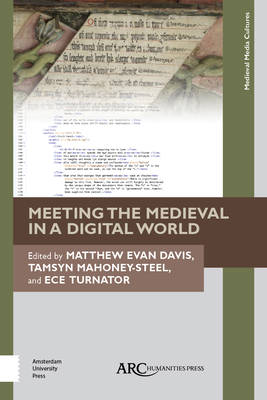
- Afhalen na 1 uur in een winkel met voorraad
- Gratis thuislevering in België vanaf € 30
- Ruim aanbod met 7 miljoen producten
- Afhalen na 1 uur in een winkel met voorraad
- Gratis thuislevering in België vanaf € 30
- Ruim aanbod met 7 miljoen producten
Zoeken
Meeting the Medieval in a Digital World
€ 252,95
+ 505 punten
Omschrijving
This book looks at the intersection between medieval studies and digital humanities, confronting how medievalists negotiate the "virtual divide" between the cultural artefacts that they study and the digital means by which they address those artefacts. The essays come from medievalists who have created digital resources or applied digital tools and methodologies in their scholarship. Text encoding and analysis, data modeling and provenance, and 3D design are all discussed as they apply to western European medieval literature, history, art history, and architecture. The volume examines the importance of combining the use of digital tools and methodologies with traditional close reading techniques and explores the physicality of the medieval manuscript and its digital analogue. Within the framework of digital humanities the book covers a host of significant issues that the academy and GLAM (galleries, libraries, archives, and museums) institutions face together, such as differences in models of information organization, metadata standards, and the "lossiness" of the connections between those standards.
Specificaties
Betrokkenen
- Uitgeverij:
Inhoud
- Aantal bladzijden:
- 262
- Taal:
- Engels
- Reeks:
Eigenschappen
- Productcode (EAN):
- 9781641891929
- Verschijningsdatum:
- 18/10/2018
- Uitvoering:
- Hardcover
- Formaat:
- Genaaid
- Afmetingen:
- 163 mm x 236 mm
- Gewicht:
- 544 g

Alleen bij Standaard Boekhandel
+ 505 punten op je klantenkaart van Standaard Boekhandel
Beoordelingen
We publiceren alleen reviews die voldoen aan de voorwaarden voor reviews. Bekijk onze voorwaarden voor reviews.










